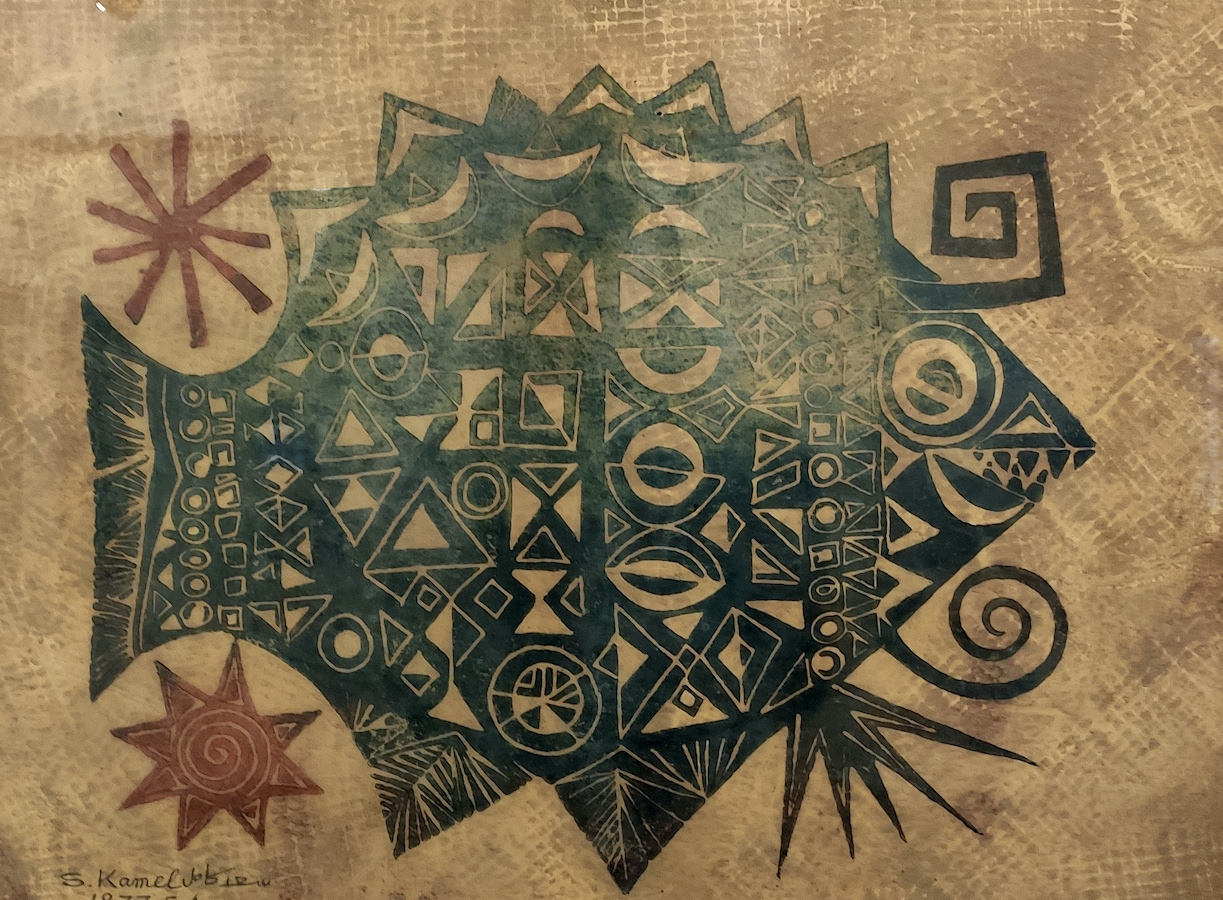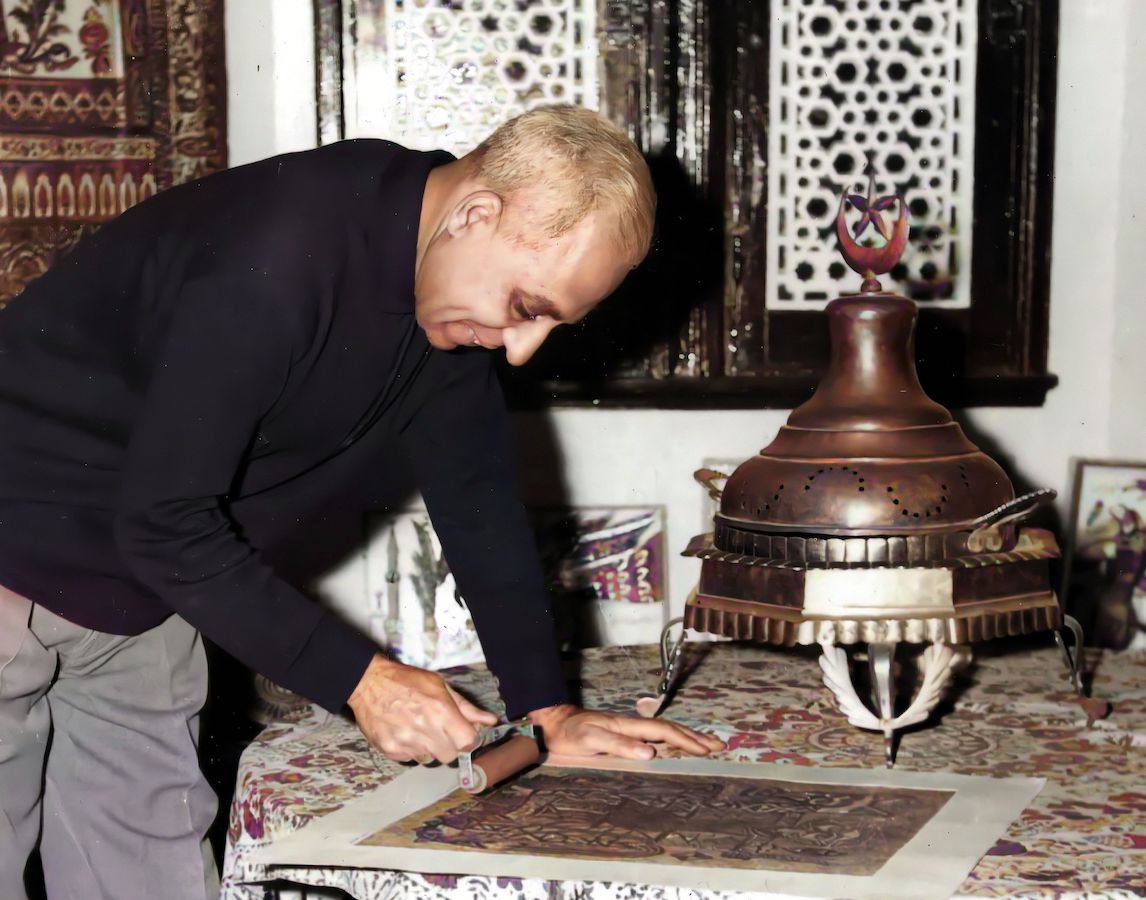LONDON: “My father enjoyed delving into Egyptian folklore. He studied folk tales and was intrigued by the painted motifs that adorned the walls of houses — including the murals painted by pilgrims upon their return from Mecca,” said Amany Kamel, daughter of the late contemporary Egyptian artist Saad Kamel, of an exhibition in Cairo last month featuring a rare collection of her father’s work.
“Folklore Tales” was held at Mashrabia Gallery of Fine Art, founded by Saad Kamel in the Eighties. It promised to take visitors on “a unique journey of fairy tales; the exciting world of Saad Kamel’s imaginations, inspired by our Egyptian folklore heritage, enriched by his genius creativity, sensual details, and diverse, innovative techniques.”
“He used to travel across Egypt and collect these folk tales, drawings and myths that have been passed from one generation to the other, then reinterpret them using his own imagination,” said Amany, an architect and designer who co-manages the gallery with her brother, Ayman.

Among the folkloric and historic figures incorporated by Saad Kamel into his work were the famed moulid sugar dolls, the 11th-century Arab leader and warrior Abu Zeid al-Hilali, and the pre-Islamic poet al-Zir Salem.
One epic narrative of which he was particularly fond was that of al-Shater Hassan, the humble fisherman who fell in love with a beautiful girl he saw daily at the seashore, whom he later realized was a princess. When the princess suddenly disappears, Hassan keeps going back to the seashore where they first met, until he stumbles upon one of her guards who asks Hassan to accompany him to the palace. There, Hassan finds out that the princess has fallen ill, and that the only cure was visiting the sea. He decides to take her out to sea, where they remain until she fully recovers. When the princess returns to the palace and expresses her wish to marry Hassan, the reluctant king sets Hassan the seemingly impossible task of procuring a huge diamond. Hassan grows hopelessly depressed, but one day discovers a diamond inside one of his freshly caught fish. Hassan is able to marry the princess, and the couple lives happily ever after.

“He was infatuated with these examples of popular imagination and eventually amassed a huge collection of works traversing popular culture, as well as Islamic and Coptic heritage,” Amany said.
Beyond having manifold influences, Kamel was also a versatile artist, having mastered a number of printmaking techniques. He experimented with batik design, engraving, and painted kilim, among other methods.
“Some of his works are very rare,” Amany said. “There is only one copy of his depiction of Sitt al-hosn (the ‘lady of beauty’ whose hair hung down from the window of a tower) for example. As far as we know, he didn’t make any copies of it, and only he knew the technique [used], so there’s no way we could replicate it.”

It is this singularity of Kamel’s work — not just his technical experimentation but the fact that, among the current generation of Egyptian artists at least, national folklore is an uncommon theme — that continues to inspire Amany to celebrate her father’s legacy, including staging an exhibition of his work every year on his birthday.
“There is an entire generation of artists who are not familiar with Saad Kamel and his work. In that sense, it becomes important to remind them of his oeuvre, and perhaps encourage them to borrow some aspects of his work in their own art,” Amany said.
“My father’s dream was to disseminate art, and he specifically wanted to showcase Egyptian art to the world. That’s why he founded Mashrabia gallery back in the Eighties,” she continued. “So as his children, the least we can do is showcase and celebrate his own art in this gallery he founded.”


